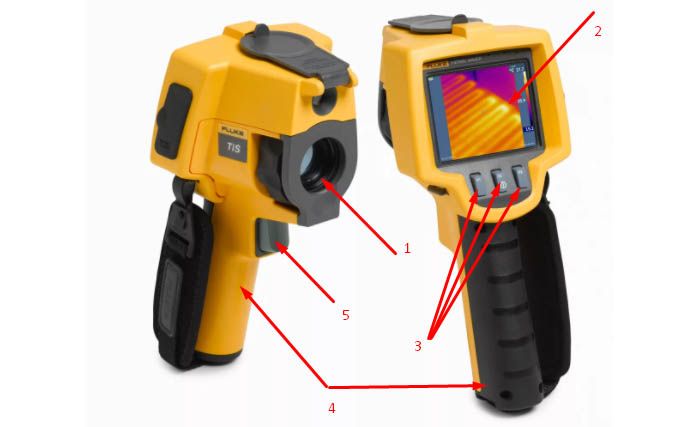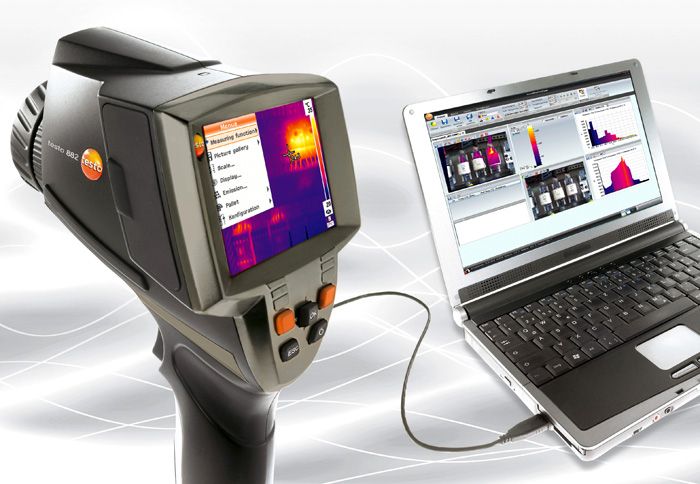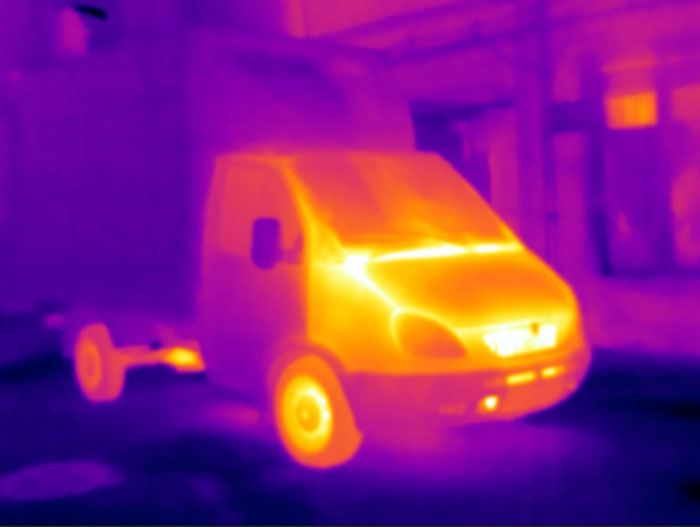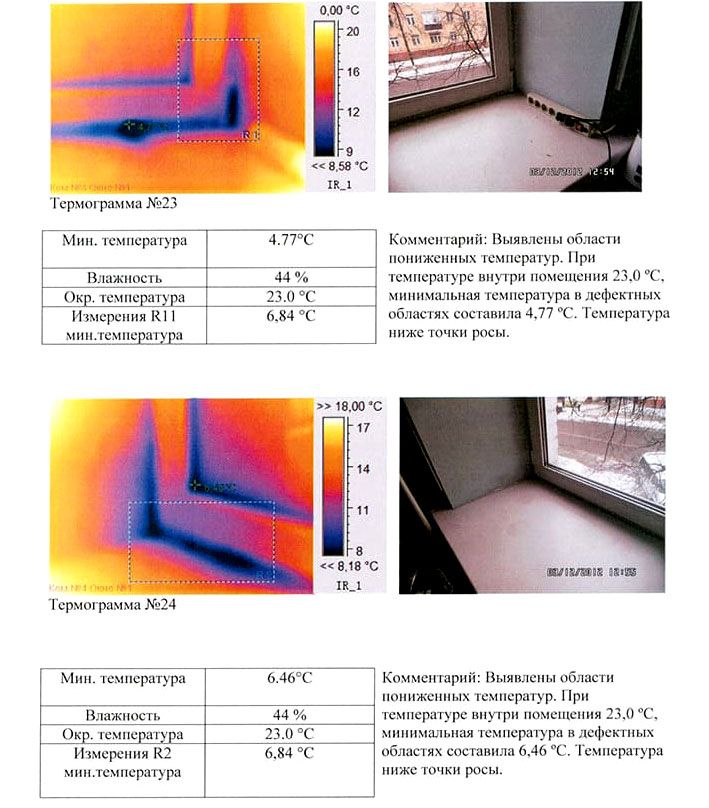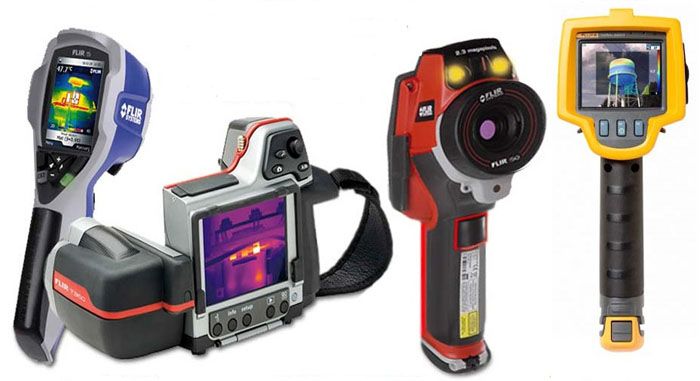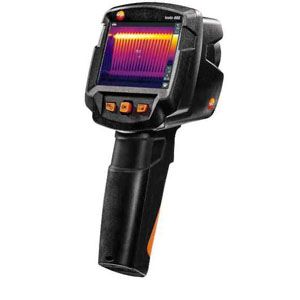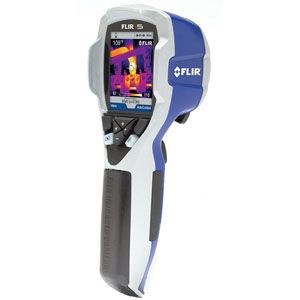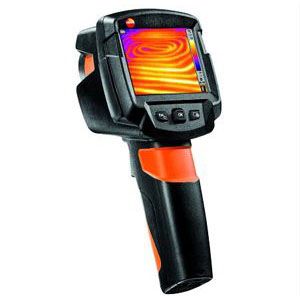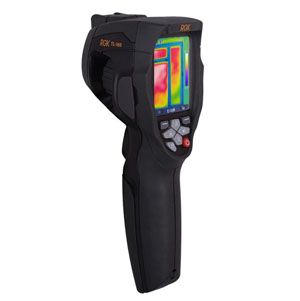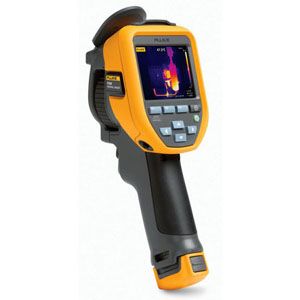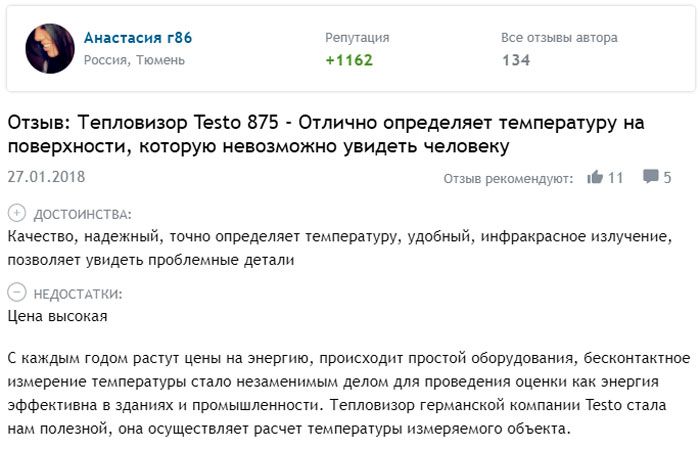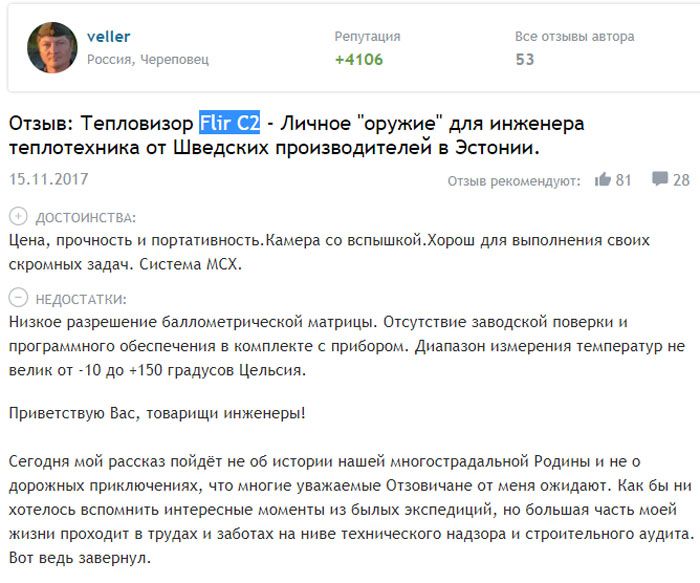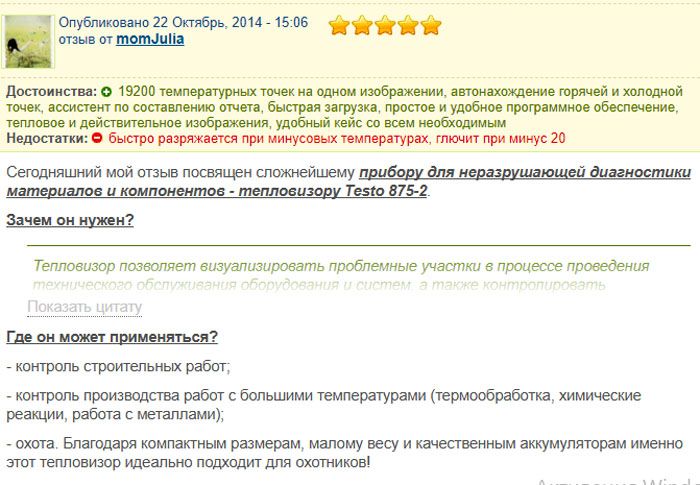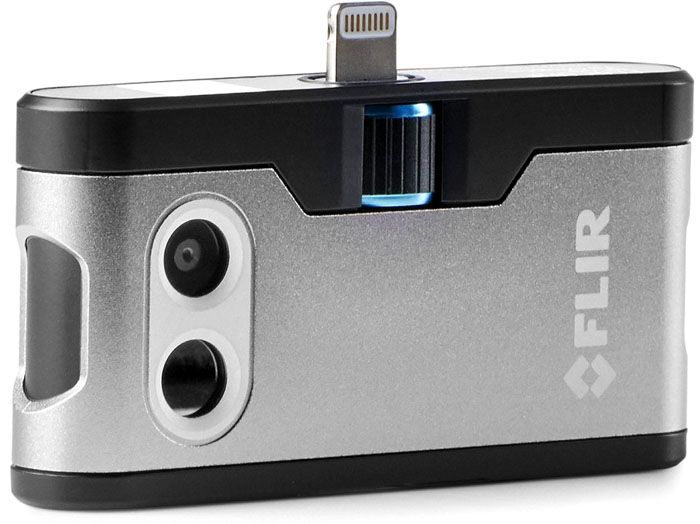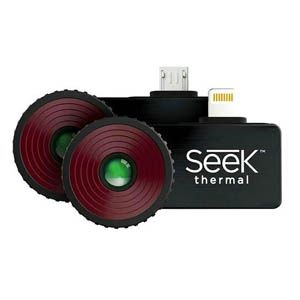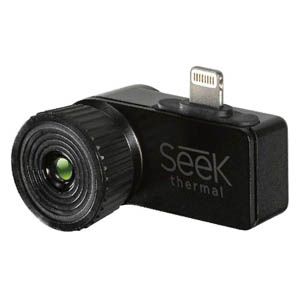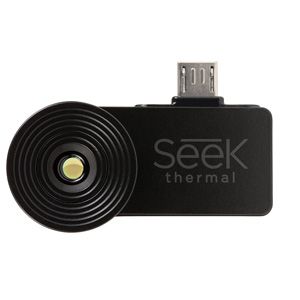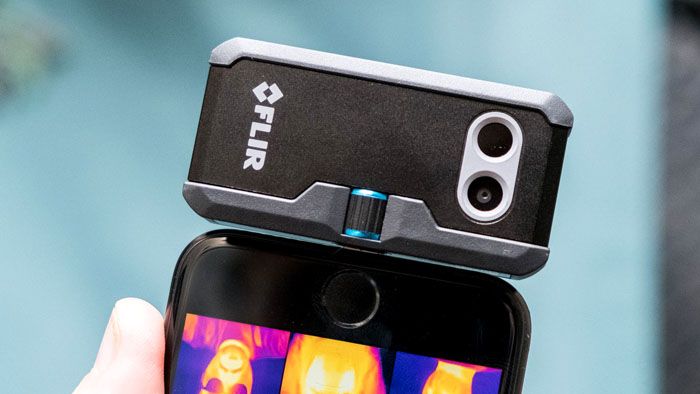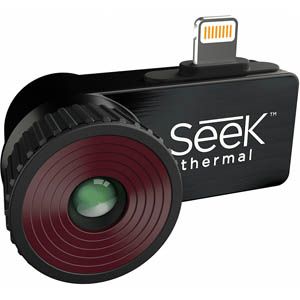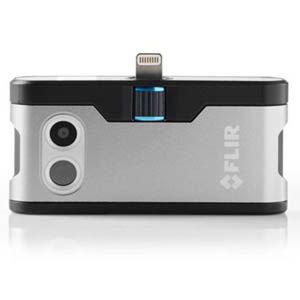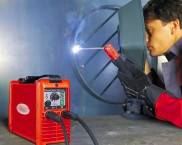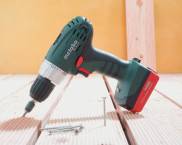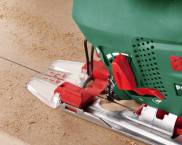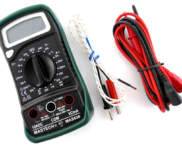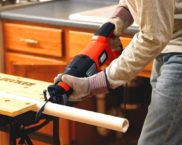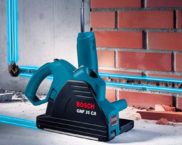Thermal imager for inspection of buildings and structures - what it is and how to use it
Reducing the costs associated with paying bills absolutely all consumers of energy resources are interested in the consumed thermal and electric energy. Among the ways to solve such problems, there are several directions: using modern materials, with better thermal insulation properties, and new types of equipment with high efficiency of use and high energy efficiency, as well as reducing heat energy losses in existing buildings and structures. To determine the place with the greatest heat loss, special devices are used for these purposes. A thermal imager for inspecting buildings and structures is the topic of this article.
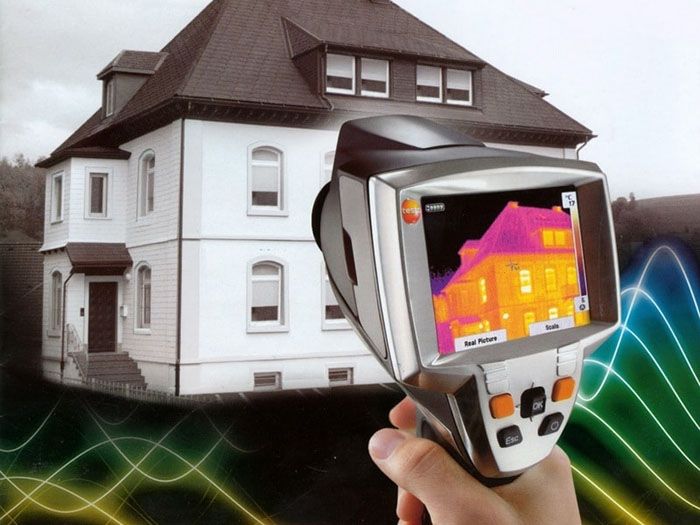
Thermal imaging survey allows you to determine the places of the greatest losses of thermal energy in buildings and structures of various designs and accessories
The content of the article
- 1 What is a thermal imager and what is it for?
- 2 Device and principle of operation
- 3 Main characteristics
- 4 Functional and additional equipment
- 5 Requirements for equipment and specialists for thermal imaging inspection of buildings
- 6 How is a house surveyed with a thermal imager
- 7 In what form is a thermography report issued after an object survey
- 8 How to choose a thermal imager for self-monitoring of heat leaks
- 9 The best models in the mid-range
- 10 Mobile thermal imager for a smartphone - how real the readings are
- 11 How to assemble a thermal imager with your own hands, and is it worth doing it at all
- 12 At what price and where is it profitable to buy a thermal imager for building inspection - price overview
What is a thermal imager and what is it for?
A thermal imager is a technical device designed to determine the temperature distribution on the surface of the inspected object without direct contact with it. In the inspection mode, the operator taking measurements receives the result in the form of a color image, in which different temperatures are displayed in different colors. Similar technical devices are used in various industries and spheres of human life:
- Objects of the electric power industry and electrical facilities for various purposes.
- Construction of tasks and structures.
- Elimination of accidents and emergencies related to the rescue of people and animals.
- Military operations.
- Hunting and tourism.
- Medical examination of a person.
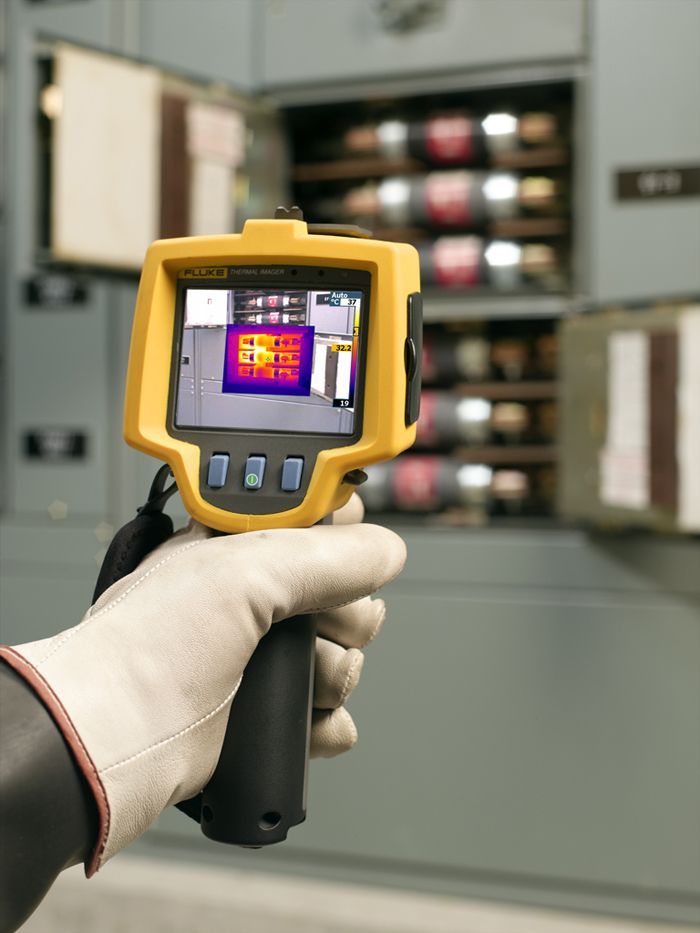
The use of a thermal imager allows power engineers to identify loose contact connections in electrical cabinets and assemblies
With the help of a thermal imager, you can check a house for heat losses, both at the stage of its construction and during operation, to detect contact connections in electrical networks that are most heated during operation. These devices help the Ministry of Emergency Situations in finding victims when there is smoke and there is no lighting at the scene of the accident. The military uses thermal imagers to detect the enemy in the dark, and it is for the same purposes that hunters use similar devices, with the only difference that they track the beast. In medicine, thermal imagers have also been used for a long time for examining a person: treating tumors of various types, including malignant ones, identifying people with fever - in case of danger of epidemics, especially when they are imported from the territory of foreign countries.
In addition, thermal imagers are used in various types of transport in the mode of operation and repair: heating of bearings and wheelsets, setting air conditioning systems and the mode of exhaust gases, etc. These devices can be used to control ultrasonic welding and the quality of manufacturing of electronic equipment, technological processes of various industries, as well as the operation of pipe transport systems: heating plants, oil and gas pipelines.
Device and principle of operation
The work of a thermal imager is based on the effect of thermography, which consists in obtaining an image in the infrared range. An infrared camera captures radiation, converts it into a digital signal and displays it on the device's monitor in the format of a thermal image. Modern industrial-type models can transfer the resulting image to an external electronic device for processing, printing and further use. The principle of operation of such devices is shown in the following figure.
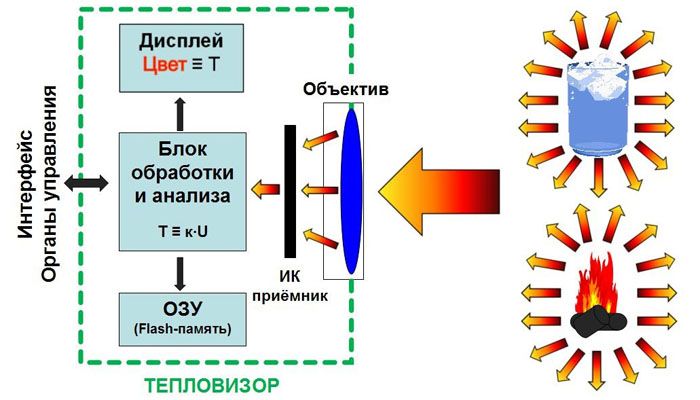
An infrared camera equipped with a lens captures the inspected object and transmits the image to the analysis processing unit, from which the image is fed to the display, memory card or external device
The main structural elements, as well as the controls for the operation of the device, are presented below:
- lens (1);
- display (2);
- control buttons (3);
- device body with a comfortable grip (4);
- button for starting the device into operation (5).
Main characteristics
All modern models are digital measuring devices, the main element of which is an electronic matrix - each of its pixels records the temperature at a separate point of the object (space) being examined. For ease of use, points with different temperatures are displayed in different colors - from dark blue to red, which corresponds to values from lower to higher values. The main technical characteristics of these devices are:
- Thermal sensitivity. This is the most important parameter that determines the measurement error in two adjacent points (NETD). It is measured in ° C, and the lower it is, the higher the quality of the resulting image. For night vision devices, this value is 0.025-0.05 ° C, and for models used for energy audit, it is 0.05-0.08 ° C.
- Dimensions and resolution of the IR detector as well as the LCD display. The dimensions of the IR detector (matrix) determine the technical capabilities of the device in terms of obtaining more accurate information about the object under investigation at each point (the number of temperature values - the number of pixels).The size of the LCD is important if the model is not equipped with an interface for connecting to an external PC or a memory card slot.
- Measured temperature range. This indicator determines the scope of use of the device and its cost. The wider the range of measured temperatures, the higher the price of such devices. For different models, the range can be from -40 ... + 500 ° С, therefore, when choosing a device, one should imagine the measurement mode to be performed using it.

The device installed in the arrival areas of the airport allows you to identify people with an increased body temperature
- Modes of displaying and saving data.
In thermal imagers, the main operating modes are:
- full IR screen ("Full IR") - the infrared image is displayed on the entire screen of the device;
- frame in frame ("Picture-in-Picture") - a window with an infrared image is displayed in the place of directional action of the device, surrounded by photographic images of the examined object;
- automatic merging ("Alpha Blending") - characterized by a combined image of an object in the visible and infrared spectrum;
- IR / Visible Alarm - produces an image in accordance with the specified settings in the IR range, the rest of the elements of the inspected object are displayed in a normal image;
- fully visible ("Full Visible Light") - conventional digital photography.
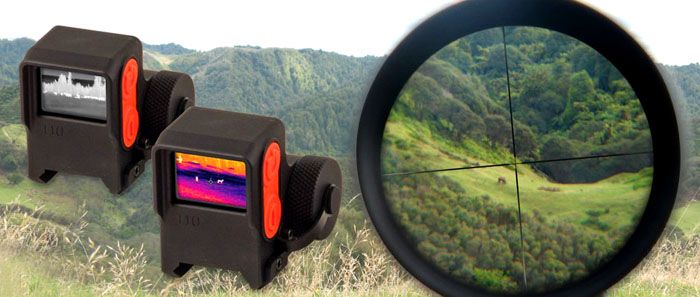
The presence of a thermal imager allows hunters to track the animal at night and in conditions of poor visibility
All manufactured thermal imagers have a "Full IR" operating mode, other modes are available only for specific models, which you should pay attention to when purchasing this equipment.
Functional and additional equipment
Functionality is one of the most important indicators of any technical device, which fully applies to thermal imagers. Among the additional functions most often available on such devices are:
- automatic display of the hottest point of the inspected object;
- zoom - the ability to zoom in on an object using the installed optics and perform a survey at a certain distance from it;
- identification of places with high humidity;
- the ability to superimpose an infrared image on a visible one ("Twin Pix" mode);
- displaying the resulting image in the "isotherm" mode, when the specified temperature is displayed in a certain color, and all other values are displayed in others;
- video mode in the infrared range - also present in the most expensive devices.
As additional equipment for individual models, manufacturers offer:
- laser guidance, facilitating the identification of specific elements of the survey;
- detachable lenses to increase zoom capabilities;
- other elements that are available for each specific model of the device.
Requirements for equipment and specialists for thermal imaging inspection of buildings
Thermal imaging inspection of buildings is an integral part of the activities carried out during the implementation of an energy audit, which is regulated by Federal Law No. 261-FZ of 23.11.2009 "On energy saving and increasing energy efficiency and inclusion in certain legislative acts of the Russian Federation" and by the order of the Government of the Russian Federation of 27.12.2010 No. 2446-r State Program of the Russian Federation "On Energy Saving and Increasing Energy Efficiency until 2020".
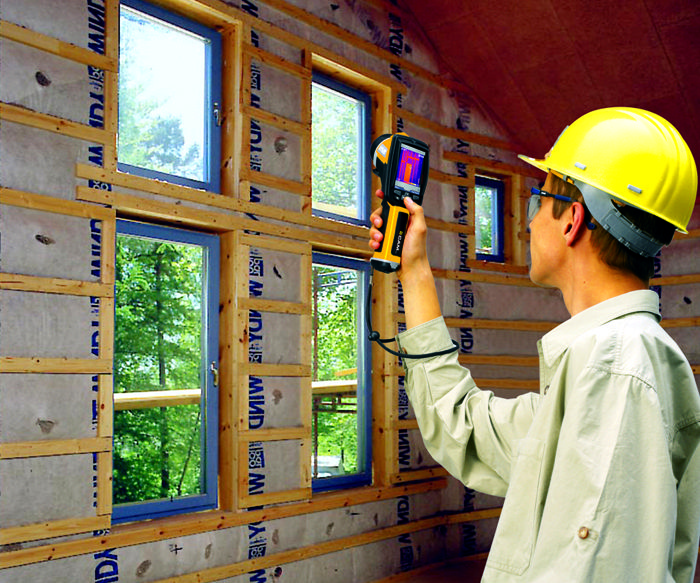
Thermal imaging inspection at all stages of construction is very important to achieve maximum heat preservation performance in the facility under construction
In addition, the implementation of surveys is regulated by a number of other Resolutions of the Government of the Russian Federation, Orders of the Ministry of Energy, as well as other documents adopted in the regions of our country, both at the level of the heads of these entities and municipalities.In addition to the organizational documents regulating the implementation and the need to perform such work, the thermal imaging survey is performed in accordance with the technical requirements related to the Rules for the performance of these works, the requirements for the objects of research and admission to their implementation:
- For admission to work:
- PB 03-372-00 "Certification rules and basic requirements for non-destructive testing laboratories".
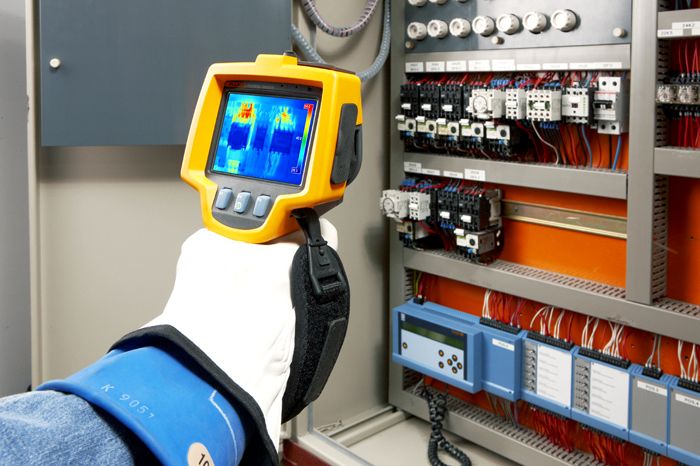
Inspection of buildings allows not only to identify the loss of various types of energy, but also to prevent the occurrence of emergency situations
- According to the rules of work:
- GOST 26254-84 "Methods for determining the resistance to heat transfer of enclosing structures";
- GOST 26629-85 “Buildings and structures. Method of thermal imaging quality control of thermal insulation of enclosing structures ";
- GOST 25380-82 "Method for measuring the density of heat fluxes passing through enclosing structures";
- GOST R 54852-2011. "Buildings and constructions. Method of thermal imaging quality control of thermal insulation of enclosing structures ";
- RD-13-04-2006 "On the procedure for thermal control of technical devices and structures used and operated at hazardous production facilities."
- To building structures and structures:
- SNiP 23-02-2003 "Thermal protection of buildings";
- MGSN 2.01-99 "Energy saving in buildings".
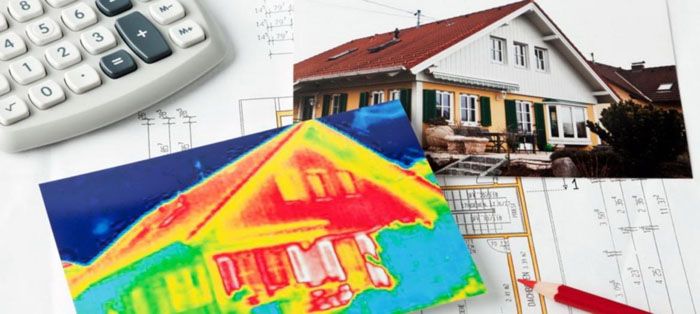
Thermal imaging examination not only determines the places of the greatest heat losses through the enclosing structures, but also reveals the places where decay and other decomposition processes accompanied by an increase in temperature
How is a house surveyed with a thermal imager
Inspection of an apartment building, cottage or industrial facility using a thermal imager is carried out by a licensed organization entitled to perform such work. The exceptions are cases when the owner of the object conducts this survey on his own, and he needs the obtained data for his personal use. For the successful implementation of work on the inspection of buildings and structures, the following conditions must be observed:
- when taking measurements outside, there should be no precipitation, otherwise the results will be unreliable;
- when shooting a house or other structure with a thermal imager, there must be a temperature difference inside the object under study and outside;
- the thermal boundaries of the measurement object must be closed;
- when inspecting buildings with a large area, measurements should be made at an equidistant distance for each measurement, which is achieved using a rangefinder or other measuring device.
How to use a specific model of a thermal imager is described in detail in its operating instructions, and due to the large number of models available on the relevant market, it is impossible to consider all modes of operation for various devices within one information article.
In what form is a thermography report issued after an object survey
After the survey of the object is completed, the organization that performed the work provides a whole package of documents regulated by GOST R 54852-2011 “Buildings and structures. Method of thermal imaging quality control of thermal insulation of enclosing structures ", which includes:
- information about the investigated object;
- references to methods, standards and other normative documents on the basis of which measurements were carried out;
- conditions under which the work was carried out (temperature, humidity, atmospheric pressure, etc.);
- date and time of research execution;
- information about the equipment used, its verification, as well as the qualifications of the personnel who carried out the measurements;
- thermograms obtained as a result of the work;
- a description of the detected defects;
- recommendations on how to eliminate the detected remarks.
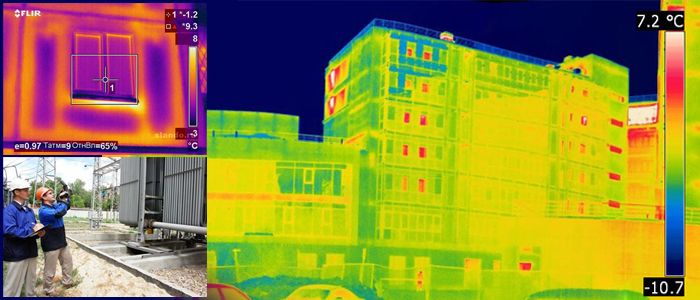
The technical report for the thermal imaging survey of buildings and structures must contain thermograms of the investigated structure.
All documents are signed by the specialists who performed the work, and approved by the head of the organization (laboratory) that performed the thermal imaging survey with the obligatory indication of the date of the report. Due to the fact that in order to obtain an official document on the performance of an energy audit, it is necessary to contact only accredited specialists, and they, in turn, have to bear certain costs for obtaining permits, checking equipment and training personnel, the cost of performing such work is quite high.
In different regions of our country, the cost of the survey can be strikingly different, due to such parameters as:
- place of research (remoteness from the location of the organization performing the work);
- the volume of work performed, depending on the area (volume) of the inspected object;
- the number of declared measurements (list) and the need for recommendations to eliminate the identified comments.
On average, the cost of examining a country house with an area of up to 100 m² for a developer will be 6,000–8,000 rubles, taking into account the issuance of an official document on the conducted research, in the absence of such, the cost will be lower. With an increase in the area, the cost also increases on average by 1000 rubles for every 100 m² and 2500-5000 rubles. - if necessary, recommendations for the elimination of comments. Of course, if an individual developer wants to determine the places of the greatest heat losses in his country house, summer house or cottage, then you can not resort to the services of licensed laboratories, but do everything yourself. In this case, you can rent the thermal imager, use a smartphone app, or make your own device.
How to choose a thermal imager for self-monitoring of heat leaks
When choosing a model for self-monitoring of heat leaks and the state of power equipment, the following indicators will be the criteria:
- Technical characteristics - determine the capabilities of a particular model: thermal sensitivity, matrix and display size, measured temperature range.
- Functionality and availability of additional features.
- Dimensions and weight.
- Reliability and brand of the manufacturer.
- Cost.
The best models in the mid-range
Currently, the market of electronic devices used to perform various measurements, including for thermal imaging control, presents a large selection of models of domestic and foreign manufacturers. The most popular models of thermal imagers in the middle price category are presented in the following table.
Feedback on the Testo 875-2 model:
Mobile thermal imager for a smartphone - how real the readings are
In the modern world, it is difficult to imagine a person without some kind of electronic gadget, communication device or other device for personal use. The most common among users are smartphones from various manufacturers, but few people know that this electronic device can be used as a thermal imager. For such use, it is enough just to install the necessary application and buy a special overlay - a device installed on a smartphone.
There are various models of such devices that are suitable only for certain operating systems (Android or IOS) or for a universal type of use. To work in tandem, a smartphone and a thermal imager, after installing the application, you must use the connector to connect the smartphone and the overlay. The thermal imager (pad) connects to the smartphone using microUSB (for Android) and a lightning connector (for IOS). The most popular models of such devices for smartphones are “Flir One” (USA – Sweden – China) and “Seek Thermal” (USA), which make it possible to turn an electronic gadget into a simple thermal imager.
Main technical characteristics of "Flir One":
- resolution - 80 × 60 pixels;
- temperature range: from -25 to + 120˚С;
- use mode: from 0 to + 45˚С;
- range - 60 meters;
- error - 2%;
- weight - 34 g;
- cost - 17,000 rubles.
Series of models "Flir One" and "Seek Thermal" differ in technical characteristics, purpose and cost. Thus, the Flir One GEN 3 PRO model, equipped with the best matrix, is capable of measuring at a distance of up to 120 meters and costs from 25,000 rubles. The Seek Thermal nozzle series also includes several modifications that differ in technical characteristics and price:
Models of mobile devices and overlays do not allow performing a high-quality inspection of buildings and structures, however, the nature and locations of heat leaks, as well as the distribution of temperatures on engineering communications, are quite capable of determining and indicating.
How to assemble a thermal imager with your own hands, and is it worth doing it at all
If you have free time, having basic knowledge in the field of electronics and, most importantly, a desire, you can make a thermal imager yourself, however, you still cannot do without factory components. This applies to an infrared thermometer and a set of lamp LEDs, a webcam or a camera, as well as other elements (temperature sensor, etc.), without which it is impossible to assemble such a device. You can learn how to make a thermal imager from the available components by watching the following video.
Video: Homemade scanning thermal imager from a temperature sensor
At what price and where is it profitable to buy a thermal imager for building inspection - price overview
It is impossible to buy a thermal imager for inspecting buildings in walking distance shops or ordinary retail chains. The implementation of such equipment is carried out by specialized companies working with instrumentation, measurement and control instruments for various purposes. The cost of thermal imagers designed for the inspection of buildings and structures is higher than that of the models used by hunters and tourists, which is due to their technical capabilities and scope of use.
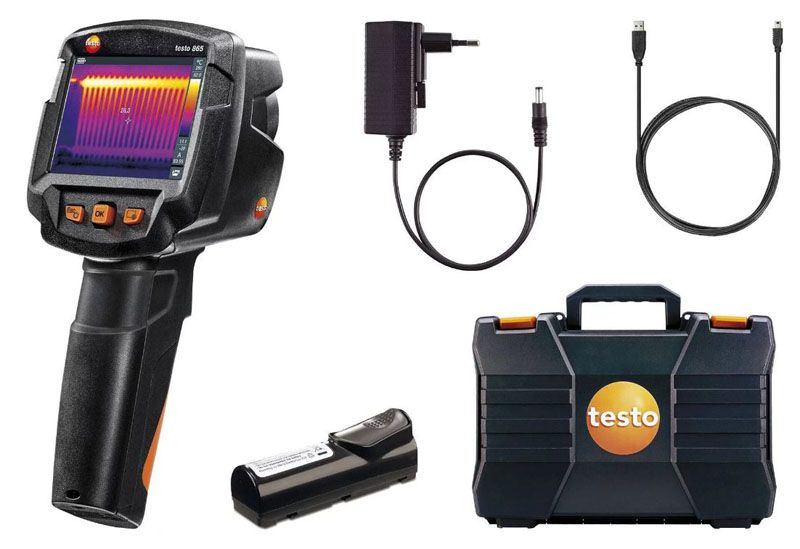
The delivery set, in addition to Testo devices, includes a case and an installation disk for a PC, a charger and light filters
The cost of the most popular models discussed in this article was given above, however, in order to understand the prices for these products, as of the beginning of the second quarter of 2018, these data are summarized in the following table and systematized.
A variety of models allows you to choose and buy a construction thermal imager in accordance with the technical needs and financial capabilities of the user, as well as select a model for hunting and recreation.




